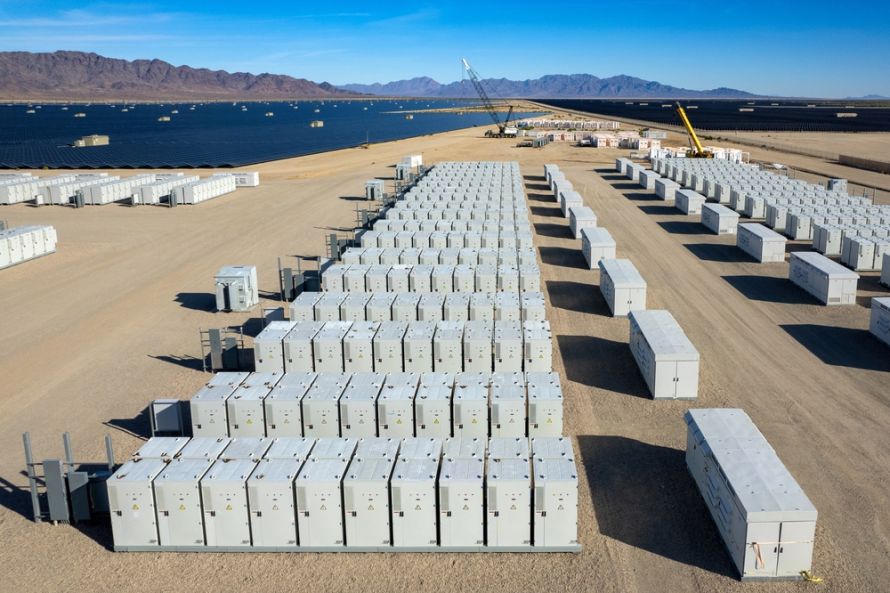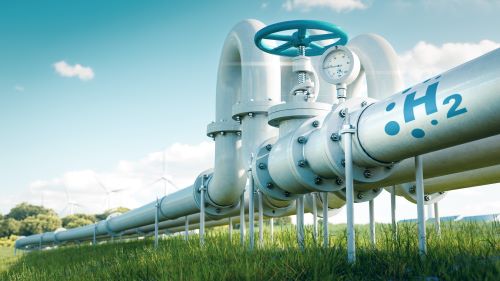The U.S. Bureau of Ocean Energy Management (BOEM) has offered a floating wind research lease to the state of Maine after completing an environmental review and finding no significant impact, it said May 28.
The move enables the offshore wind research lease, located about 28 nautical miles off Maine, to advance. Maine has 30 calendar days to accept, reject or request modifications to the lease.
“Floating wind technology can make offshore wind a reality in the Gulf of Maine,” said BOEM Director Elizabeth Klein. “BOEM will continue to work in partnership with the state of Maine as we move forward to facilitate the responsible development of offshore wind in this region, as well as the deployment of floating offshore wind technology nationwide.”
The state requested the research lease in October 2021 to study floating offshore wind energy technology and its deployment. If developed, the site would include up to 12 floating offshore wind turbines capable of generating up to 144 megawatts (MW) of renewable energy, according to BOEM.
The U.S. aims to have 30 gigawatts (GW) of offshore wind capacity by 2030 and 15 GW of floating wind capacity by 2035.
Here’s a look at other renewable energy news this week.
Biofuels
Waga Energy, Engie Ink RNG Deal
Waga Energy and Engie signed a biomethane purchase agreement (BPA) for renewable natural gas produced at the Veolia site in Claye-Souilly near Paris, Waga said on May 29.
The 13-year contract, which is the longest BPA signed to date in France, values the biomethane at a higher price than the subsidized tariff, Waga said in a news release. “This enables Waga Energy to secure financing for the production unit through a long-term credit facility with the banks CIC and Arkéa Banque Entreprises et Institutionnels,” the company said.
The contract took effect May 1.
Up to 120 gigawatt hours (GWh) of RNG, equivalent to the consumption of 20,000 households, is produced annually at the Veolia site, according to Waga.
“Veolia is a key player in the production of bioenergy, already producing 1.6 terawatt-hour of biogas from waste anaerobic digestion in France alone,” Veolia CEO Estelle Brachlianoff said. “Through this partnership with Waga Energy and Engie, we are contributing to the development of a genuine green gas production industry at the European level, essential for the ecological transformation.”
Energy storage
Torus to Install Energy Storage Systems at Gardner Group Properties

Energy storage provider Torus will provide 26 megawatt hours (MWh) of energy storage capacity across a portion of real estate developer Gardner Group’s portfolio, equivalent to powering nearly 1,000 homes for a full day.
Under a landmark deal, Torus will install its Torus Station energy storage and management system at Gardner’s multiple properties, the company announced May 29.
The Torus Stations will integrate “advanced” battery and flywheel energy storage systems with Torus’ software platform.
Torus said the integration enables energy management and demand response capabilities and connects renewable energy sources and electric vehicle charging infrastructure.
The systems will be manufactured at Torus’ South Salt Lake City, Utah, facility and are expected to begin installation in fourth-quarter 2024 with completion by first-quarter 2026.
"Partnering with Torus allows us to optimize our energy management, reduce our carbon footprint and provide enhanced value to our tenants,” said Christian Gardner, CEO of Gardner Group. “We look forward to the positive impact this project will have on our properties and the broader community.”
Hydrogen
TotalEnergies-led JV, Verbund Sign Hydrogen Partnership with Tunisia

Verbund, an Austria-based electricity company, partnered with TotalEnergies and EREN Groupe joint venture company TE H2 to study implementation of a green hydrogen project in Tunisia.
Called H2 Notos, hydrogen would be produced with electrolyzers powered by onshore wind and solar energy with desalinated sea water, TotalEnergies said May 28. Ambitions are to initially produce 200,000 tons of green hydrogen per year, potentially scaling up to 1 million tons per year.
“H2 Notos has the potential to become a significant supplier of green hydrogen for Europe while fostering significant jobs creation in Tunisia,” said TE H2 CEO David Corchia. “We are entering into a phase of greenfield development and major technical work to assess the feasibility of the project and we will need to further deepen the highly constructive and fruitful collaboration we have enjoyed with the national and local authorities through H2 Notos.”
The hydrogen will access the European market via the SoutH2 Corridor hydrogen pipeline, which is expected to be commissioned around 2030. The pipeline connects North Africa to Italy, Austria and Germany.
Verbund will coordinate the transport of hydrogen toward Central Europe, according to the release, while TE H2 and Verbund will jointly develop, finance, construct and operate the project, according to the release.
Italy, Germany, Austria Sign Cooperation Deal on Southern Hydrogen Link
Italy, Germany and Austria have signed an agreement to cooperate on the development of a network to transport hydrogen from the southern Mediterranean to northern Europe, the energy ministries of the three countries said on May 30.
The official announcement marks a concrete step in the European Union's strategy to secure renewable hydrogen supplies by 2030 to help decarbonize its most polluting industries.
“The Southern Hydrogen Corridor will provide renewable hydrogen imports from North Africa via southern Italy and further connect to the major hydrogen demand hubs in Italy, Austria and Germany,” the German ministry said in a statement.
The link dubbed SoutH2, which last year won priority status from the European Commission, is considered important to develop a European market for renewable fuel.
A group of companies, including Italian gas grid operator Snam, have teamed up to build the SoutH2 pipeline by the beginning of the next decade, with a financial commitment of more than 4 billion euros ($4.3 billion).
Solar
EDP Renewables Launches Solar Park in Arkansas
EDP Renewables North America has completed its 175-MW Crooked Lake Solar Park in Arkansas, the company said May 29.
Located near Blytheville in Mississippi County, the solar park is expected to generate enough electricity to power the equivalent of about 30,000 Arkansas homes annually. The solar park is the latest utility-scale addition for EDPR, which now has facilities in 19 U.S. states.
“We’re proud to continue our expansion in the South with a focus on serving the clean energy needs of Arkansas,” stated EDP Renewables North America CEO Sandhya Ganapathy. “By providing sustainable energy to Mississippi County and the surrounding area, we are generating economic growth and grid stability for generations to come in the region.”
The solar park, located on an approximately 1,800-acre site, utilizes single-axis tracking photovoltaic panels.
Apricus Generation Acquires Solar, Storage Developer Nexus Renewables
Florida-based Apricus Generation has acquired a controlling interest in Nexus Renewables, a solar and energy storage developer, according to a May 29 news release.
Nexus, which has a pipeline of about 500 MW of solar and energy storage projects in North America, is the first strategic acquisition of Apricus. The holding company launched earlier this year.
“As with many independent developers, Nexus has more project opportunities than access to capital,” said Gautam Chandra, executive chairman and co-founder of Apricus Generation. “By joining Apricus, they now have access to capital and expertise that will allow them to execute on their pipeline.”
Nexus Renewables is based in Toronto, Ontario.
RELATED
Adding Green: HighPeak, Priority Power Advance WildHorse Solar
Apricus Generation Acquires Solar, Storage Developer Nexus Renewables
Wind
Ørsted, New Jersey Reach Settlement Over Canceled Offshore Wind Farms
New Jersey officials said the state will receive $125 million from a legal settlement with Denmark’s Ørsted over the company’s cancellation last year of two offshore wind farm projects.
The New Jersey Board of Public Utilities said in a statement that the funds will be used for investments in wind component manufacturing facilities and wind farms.
The settlement comes nearly seven months after Ørsted said it would stop developing the Ocean Wind 1 and 2 projects off the coast of New Jersey as it struggled with soaring costs and supply chain delays.
The cancellations triggered an angry response from New Jersey Governor Phil Murphy, who is banking on offshore wind to help achieve the state’s climate change goals.
His administration said it would speed up the state’s plans to procure additional offshore wind capacity by soliciting bids for new projects in the second quarter of 2025, more than a year ahead of schedule.
The utility regulator also said it would pause an offshore wind transmission planning effort with the regional power grid operator, PJM Interconnection, while it considers the impact of a new rule from the Federal Energy Regulatory Commission that reforms how large power lines are approved and paid for.
Hart Energy Staff and Reuters contributed to this report.
Recommended Reading
E&P Highlights: Jan. 21, 2025
2025-01-21 - Here’s a roundup of the latest E&P headlines, with Flowserve getting a contract from ADNOC and a couple of offshore oil and gas discoveries.
Liberty Capitalizing on Power Generation as Completions Stay Flat
2025-01-31 - New Liberty Energy Inc. CEO Ron Gusek says company is ‘uniquely positioned’ to deliver modular units for data centers.
US Oil, Gas Rig Count Unchanged This Week
2025-03-14 - The oil and gas rig count was steady at 592 in the week to March 14. Baker Hughes said that puts the total rig count down 37, or about 6% below this time last year.
Analysts’ Oilfield Services Forecast: Muddling Through 2025
2025-01-21 - Industry analysts see flat spending and production affecting key OFS players in the year ahead.
E&P Highlights: March 31, 2025
2025-03-31 - Here’s a roundup of the latest E&P headlines, from a big CNOOC discovery in the South China Sea to Shell’s development offshore Brazil.
Comments
Add new comment
This conversation is moderated according to Hart Energy community rules. Please read the rules before joining the discussion. If you’re experiencing any technical problems, please contact our customer care team.





